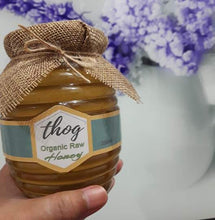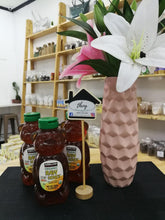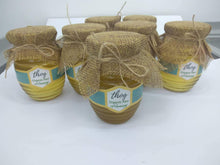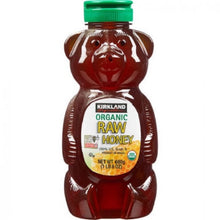
Honey is a sweet, viscous food substance made by honey bees and some related insects. Bees produce honey from the sugary secretions of plants (floral nectar) or from secretions of other insects (such as honeydew), by regurgitation, enzymatic activity, and water evaporation. Bees store honey in wax structures called honeycombs. The variety of honey produced by honey bees (the genus Apis) is the best-known, due to its worldwide commercial production and human consumption.[3] Honey is collected from wild bee colonies, or from hives of domesticated bees, a practice known as beekeeping or apiculture.ÂWhat Is Raw Honey?
Collection
Honey is collected from wild bee colonies or from domesticated beehives. On average, a hive will produce about 29 kilograms (65 lb) of honey per year.[23] Wild bee nests are sometimes located by following a honeyguide bird.
To safely collect honey from a hive, beekeepers typically pacify the bees using a bee smoker. The smoke triggers a feeding instinct (an attempt to save the resources of the hive from a possible fire), making them less aggressive, and obscures the pheromones the bees use to communicate. The honeycomb is removed from the hive and the honey may be extracted from it either by crushing or by using a honey extractor. The honey is then usually filtered to remove beeswax and other debris.
Preservation
Because of its composition and chemical properties, honey is suitable for long-term storage, and is easily assimilated even after long preservation. Honey, and objects immersed in honey, have been preserved for centuries. The key to preservation is limiting access to humidity. In its cured state, honey has a sufficiently high sugar content to inhibit fermentation. If exposed to moist air, its hydrophilic properties pull moisture into the honey, eventually diluting it to the point that fermentation can begin.
Adulteration
Honey is sometimes adulterated by the addition of other sugars, syrups, or compounds to change its flavor or viscosity, reduce cost, or increase the fructose content to stave off crystallization. Adulteration of honey has been practiced since ancient times, when honey was sometimes blended with plant syrups such as maple, birch, or sorghum and sold to customers as pure honey. Sometimes crystallized honey was mixed with flour or other fillers, hiding the adulteration from buyers until the honey was liquefied. In modern times the most common adulterant became clear, almost-flavorless corn syrup; the adulterated mixture can be very difficult to distinguish from pure honey.
Raw honey is best described as honey as it exists in the beehive. It is made by extracting honey from the honeycombs of the hive and pouring it over a mesh or nylon cloth to separate the honey from impurities like beeswax and dead bees. Once strained, raw honey is bottled and ready to be enjoyed.
Raw Honey Is More Nutritious
Raw honey contains a wide variety of nutrients.
It has approximately 22 amino acids, 31 different minerals, and a wide range of vitamins and enzymes. What's most impressive about raw honey is that it contains nearly 30 types of bioactive plant compounds. These are called polyphenols, and they act as antioxidants.
Many studies have linked these antioxidants with impressive health benefits, including reduced inflammation and a lower risk of heart disease and certain cancers.

How to Tell the Difference Between Real and Fake Honey
The Crystallization Test
As honey is made from nectar, bees process it and infuse it with special enzymes. One of these enzymes, glucose oxidase, helps to remove any water from the honey. The result of this process is that natural honey has a tendency to crystallize and become thicker when stored. Artificial honey will not.
The Water Test
Real honey doesn't mix readily with water. Just drop a teaspoon into a glass of water and you'll see that it settles at the bottom of your container. To incorporate it into the liquid, real honey needs to be stirred. Fake honey, on the other hand, easily dissolves in water without even mixing.
The Paper Test
Place a few drops of the sample you are testing on a paper towel or napkin. If the honey is pure, it will remain solid and not soak through. If the honey is impure, it will wet the paper and maybe even soak through it.
The Microwave Test
Add about 2 tablespoons of your sample to a microwave-safe bowl and heat on high power for 45 to 60 seconds. Natural honey will caramelize quickly while artificial honey will become foamy and bubbly.
The Bread Test
Spread your sample on a slice of bread. If it is genuine honey, the bread will become crunchy on top within a couple of minutes. If the honey is counterfeit, the bread will become soggy (because of its different moisture content).

Yes! We value your TRUST, If you can prove our HONEY is Fake, we'll return your Money and get a Freebie from our store...






